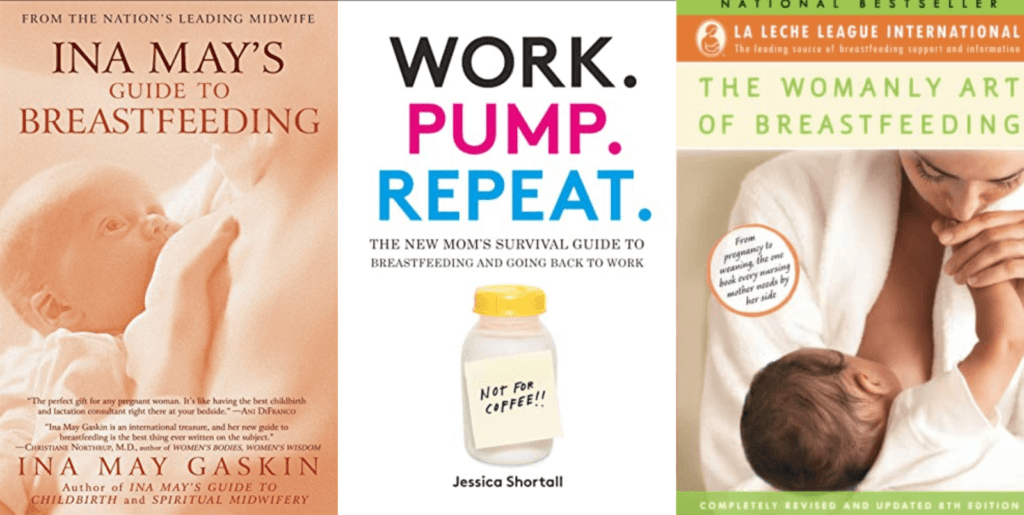In this post, you’re going to learn how to combine breastfeeding and pumping.
Why Mothers Combine Breastfeeding And Pumping?
Mothers may combine breastfeeding and pumping for several reasons.
Breastfeeding helps to establish a strong bond between the mother and baby and provides important health benefits for both of them.
However, there may be times when a mother is unable to breastfeed directly, such as when she needs to return to work or has other responsibilities.
Pumping is a way for mothers to express breast milk so that it can be given to the baby later.
This allows the mother to continue providing her baby with the nourishment and immunological benefits of breast milk, even when she cannot be there physically to breastfeed.
Combining breastfeeding and pumping also helps to maintain a mother’s milk supply.
Breast milk production works on a supply and demand basis, which means that the more a baby feeds, the more milk the mother produces.
By using a breast pump in addition to breastfeeding, a mother can stimulate her milk supply and ensure that she has enough milk for her baby.
Related: Best 10 Breastfeeding Books
Benefits of Combining Breastfeeding And Pumping
Combining breastfeeding and pumping offers several benefits for both the mother and baby:
1. Increases milk supply: Breastfeeding and pumping work together to stimulate milk production, which can help increase your milk supply.
2. Promotes flexibility: Pumping allows you to collect milk and store it for later use, which provides flexibility in scheduling feedings and allows others to feed the baby as well.
3. Assists with engorgement: Pumping can relieve engorgement, a condition where the breasts become hard, swollen, and painful due to an excess of milk. (source)
Pumping can also help prevent mastitis, an inflammation of breast tissue caused by milk that is trapped in the breast. (source)
4. Increases bonding: Breastfeeding helps to strengthen the bond between mother and baby, while pumping allows other family members to participate in feeding the baby and bond with them too.
5. Helps with returning to work: Combining breastfeeding and pumping allows working mothers to maintain their milk supply and continue providing breastmilk to their babies even when they are not physically present.
6. Helps premature babies: Premature babies may not have the strength to breastfeed initially, so pumping can ensure that your milk supply is kept up until your baby is able to nurse.
Related: Breastfeeding Resources (Information, Apps, Books, Podcasts)
How To Combine Breastfeeding And Pumping?
Here are some tips to help make the process smoother:
#1. Choose the Right Pump
Choosing the right breast pump can make a big difference in your feeding journey.
Types of Pumps
There are various types of breast pumps available for breastfeeding mothers.
Here are a few commonly used types:
1. Manual Breast Pump: This type of pump is operated by hand and requires the mother to manually pump the milk from her breast into a container.
2. Electric Breast Pump: This type of pump uses an electric motor to pump the milk from the breast and into a container. They can be either single or double pumps.
3. Battery-Operated Breast Pump: Similar to electric breast pumps, these pumps are powered by batteries and provide the convenience of being portable.
4. Hospital-Grade Breast Pump: These pumps are designed for frequent use and are typically used in hospitals or by mothers who need to express milk frequently.
5. Wearable Breast Pump: These pumps are designed to be worn inside a bra and offer hands-free pumping.
Tips for Choosing the Right Pump
There are a few things to consider when shopping for a breast pump:
1. Your Lifestyle: Do you plan to go back to work or attend school while breastfeeding? If so, a double electric breast pump may be your best option for quick and efficient pumping.
2. Frequency of Pumping: If you plan on pumping frequently, a hospital-grade pump may be best suited for your needs. They are designed to be durable and effective for multiple daily uses.
3. Comfort: The size and shape of a breast pump can make a big difference in your comfort level during pumping sessions. Consider a pump that has soft, flexible suction cups or shields that fit well with your body.
4. Budget: Breast pumps can range in price from affordable manual pumps to more expensive electric models. Make sure to set a budget and find a pump that meets your needs while staying within your price range.
5. Brand Reputation: Research brands before purchasing a pump to ensure they have a reputation for producing high-quality, reliable products that will meet your needs.
It’s important to choose a breast pump that works best for your specific situation and preferences.
Don’t hesitate to consult with a lactation consultant or your healthcare provider for additional guidance.
#2. Start Slowly
Introduce pumping gradually, starting with one pump session per day.
Gradually introducing pumping while breastfeeding can be helpful for mothers who want to build up a breast milk supply or have to return to work.
Start by pumping once a day, preferably in the morning when milk production is highest. (source)
Begin with a short pumping session, around 10 minutes, until you become more comfortable with the process.
Gradually increase the frequency and duration of pumping sessions over time. Aim to pump every 2-3 hours for 15-20 minutes per session.
Be patient and stick to a routine. It may take some time for your body to adjust to pumping, so don’t become discouraged if it takes time to build up an adequate milk supply.
Related: Best 70 Pregnancy Hacks (+Products Recommendation)
#3. Pump After Breastfeeding
To increase milk production, pump for 10-15 minutes after breastfeeding to express any remaining milk.
It is recommended to wait at least 30-60 minutes after feeding to give your breasts time to refill with milk.
This will help ensure that you can produce enough milk for your baby’s next feeding while also avoiding engorgement and discomfort.
It’s also important to properly sanitize your pumping equipment before and after each use to prevent any potential contamination.
#4. Create a Consistent Schedule
Create a pumping schedule that works for you and stick to it, as consistency is key to building and maintaining milk supply.
Here’s an example of a pumping schedule for a breastfeeding mother who is returning to work:
| 6:00 am | Breastfeed or pump before leaving for work |
| 9:00 am | Pump for 10-15 minutes during a break |
| 12:00 pm | Pump for 10-15 minutes during lunch break |
| 3:00 pm | Pump for 10-15 minutes during a break |
| 6:00 pm | Breastfeed or pump when you get home from work |
It’s important to note that each mother and baby’s needs are different, so adjust the schedule based on your own situation.
Also, if possible, it’s recommended to pump every 2-3 hours during the workday to maintain milk supply.
Related: Best 7 Pregnancy Self Care Products
#5. Store Breast Milk Properly
Label and store expressed milk in a clean container in the refrigerator or freezer immediately after pumping.
Proper storage of breast milk is important to maintain its quality and safety for your baby’s consumption.
Here are some guidelines on how to store breast milk:
1. Use clean containers: Use clean, sterilized bottles or breast milk storage bags to store the milk.
2. Label the milk: Label the container with the date and time that you expressed the milk.
3. Store milk immediately: Store breast milk as soon as possible after expressing it. This helps to preserve the milk’s nutrients and prevent bacterial growth.
4. Store milk in the refrigerator or freezer: Freshly expressed breast milk can be stored in the refrigerator for up to four days.
If you plan to use the milk within a few days, storing it in the refrigerator is the best option. If you want to store the milk for longer, you can freeze it. Breast milk can be stored in the freezer for up to 6 months.
5. Freeze milk in small batches: Freeze breast milk in small batches, about 2-4 ounces per container, so that you can thaw only what you need.
6. Thaw milk correctly: When thawing frozen breast milk, place the container in the refrigerator overnight. You can also place it in a bowl of warm water or run it under warm water until it comes to room temperature.
Do not microwave breast milk as it can damage the nutrients and heat the milk unevenly, leading to hot spots. (source)
By following these guidelines, you can safely store your breast milk and ensure that it remains fresh and healthy for your baby.
#6. Stay Hydrated
It is important for breastfeeding and pumping mothers to stay hydrated, as it helps maintain milk supply and keeps the body functioning well.
The general guideline is to drink about 16 cups (128 ounces) of water per day, but some may need more depending on their individual needs and activity level. (source)
It is also important to note that food and drinking other fluids such as milk, juice, or herbal tea can also contribute to hydration, but plain water is still the best choice.
It’s a good idea to listen to your body and drink when you’re thirsty.
Keeping a water bottle nearby while breastfeeding or pumping can help make it easier to stay hydrated throughout the day.
#7. Practice Relaxation Techniques
Stress can negatively impact milk production, so try relaxation techniques such as deep breathing or meditation while pumping.
Here are some tips for practicing these techniques:
1. Deep breathing: Take slow, deep breaths, inhaling through your nose and exhaling through your mouth. Try to focus your attention on your breath and let go of any distracting thoughts or worries.
2. Meditation: Sit or lie down in a comfortable position and close your eyes. Take a few deep breaths and then begin to focus your attention on your breath. If your mind wanders, gently bring it back to your breath.
3. Visualization: Imagine yourself in a peaceful, relaxing place, such as a beach or a forest. Use all your senses to imagine the sights, sounds, and smells of this place, and try to fully immerse yourself in the experience.
Remember, practice makes perfect with relaxation techniques. The more you practice, the easier it will become to relax and focus while pumping.
#8. Seek Support
Join a breastfeeding support group or talk to a lactation consultant if you have questions or concerns about combining breastfeeding and pumping.
To find a lactation consultant near you, consider reaching out to your healthcare provider or visiting the IBCLC directory.
The following are some breastfeeding online support group:
- La Leche League – Inducing Lactation & Relactation
- La Leche League – Tandem Nursing (Tandem nursing is defined as a “common term for breastfeeding siblings concurrently”)
- La Leche League – Special Needs Breastfeeding Support
Related: How To Use A Pregnancy Pillow?
Conclusion
Combining breastfeeding and pumping can be a beneficial practice for nursing mothers, as it allows for a more flexible feeding schedule and helps maintain milk supply.
There are various reasons why mothers may choose to utilize both methods, such as when returning to work, wanting to share feeding responsibilities, or simply ensuring a sufficient supply of milk for their baby.
It is essential to remember that every individual’s situation is unique, and finding the right balance between breastfeeding and pumping might require some trial and error.
FAQ
How To Clean Breast Pump Tubing?
Cleaning breast pump tubing is an essential step in maintaining good hygiene and preventing the growth of bacteria.
Here are the steps to clean breast pump tubing:
1. Disassemble the breast pump: First, remove the tubing from the breast shield and pump motor.
2. Wash the tubing in warm soapy water: Fill a sink or basin with warm soapy water and add a few drops of dish soap. Swirl the tubing in the water for a few minutes to ensure that all parts get cleaned.
Make sure you don’t use hot water as it may damage the tubing.
3. Rinse the tubing in cool water: Once you’ve finished cleaning with warm soapy water, rinse the tubing with cool water. This helps to remove any residual soap and dirt.
4. Air dry the tubing: After rinsing, hang the tubing over a drying rack or clothesline to air dry completely. Avoid using a towel or cloth to dry them as this can introduce bacteria.
5. Sterilize the tubing: If it’s recommended by the manufacturer, you can sterilize the tubing after washing and drying.
You can do this by boiling the tubing in water for 5-10 minutes or by using a steam sterilizer.
By following these steps, you can ensure that the breast pump tubing is clean and hygienic for your baby.




